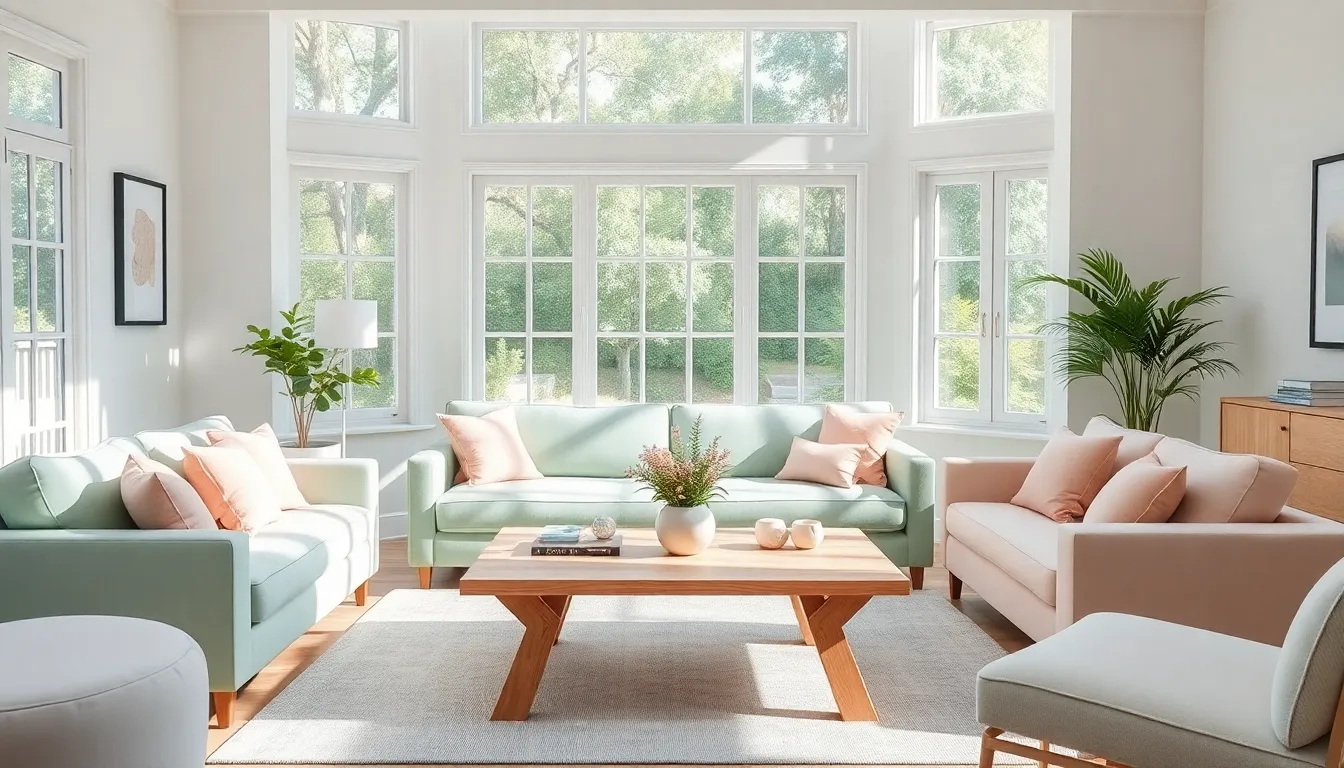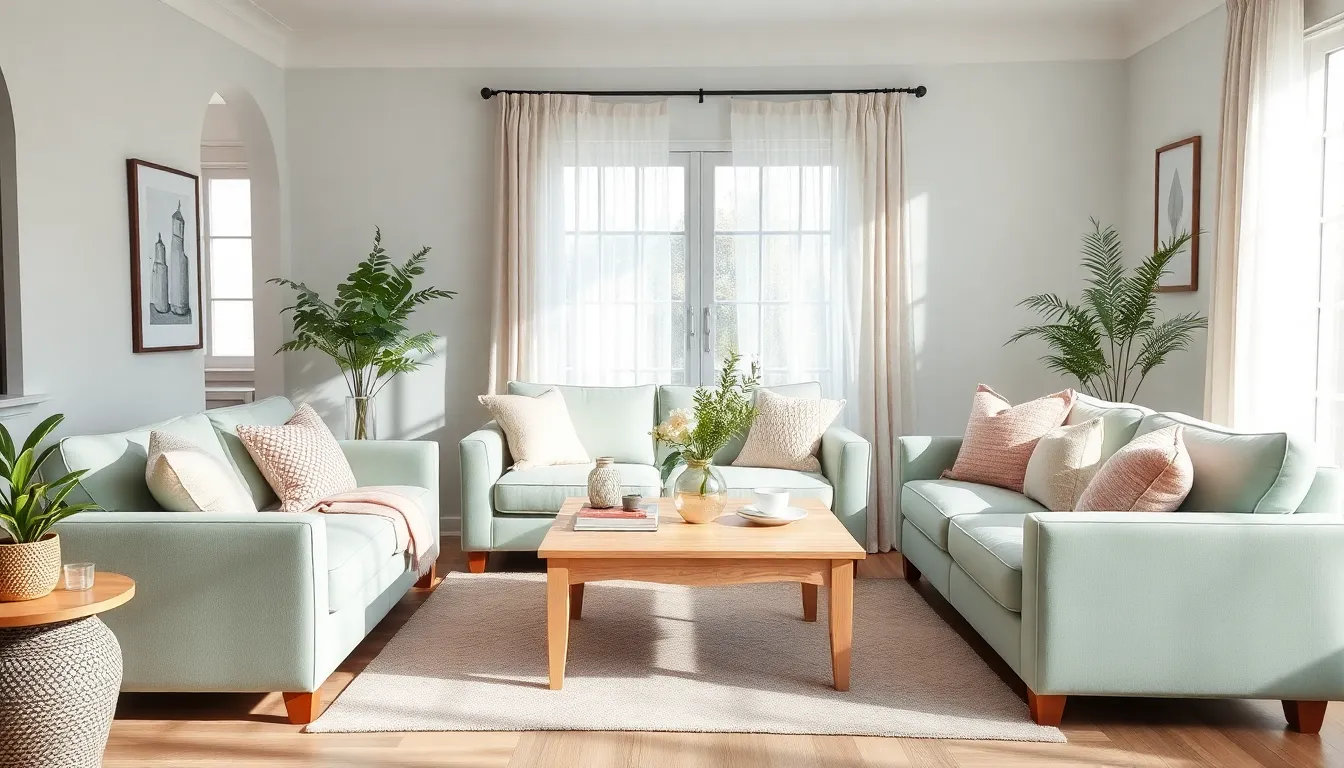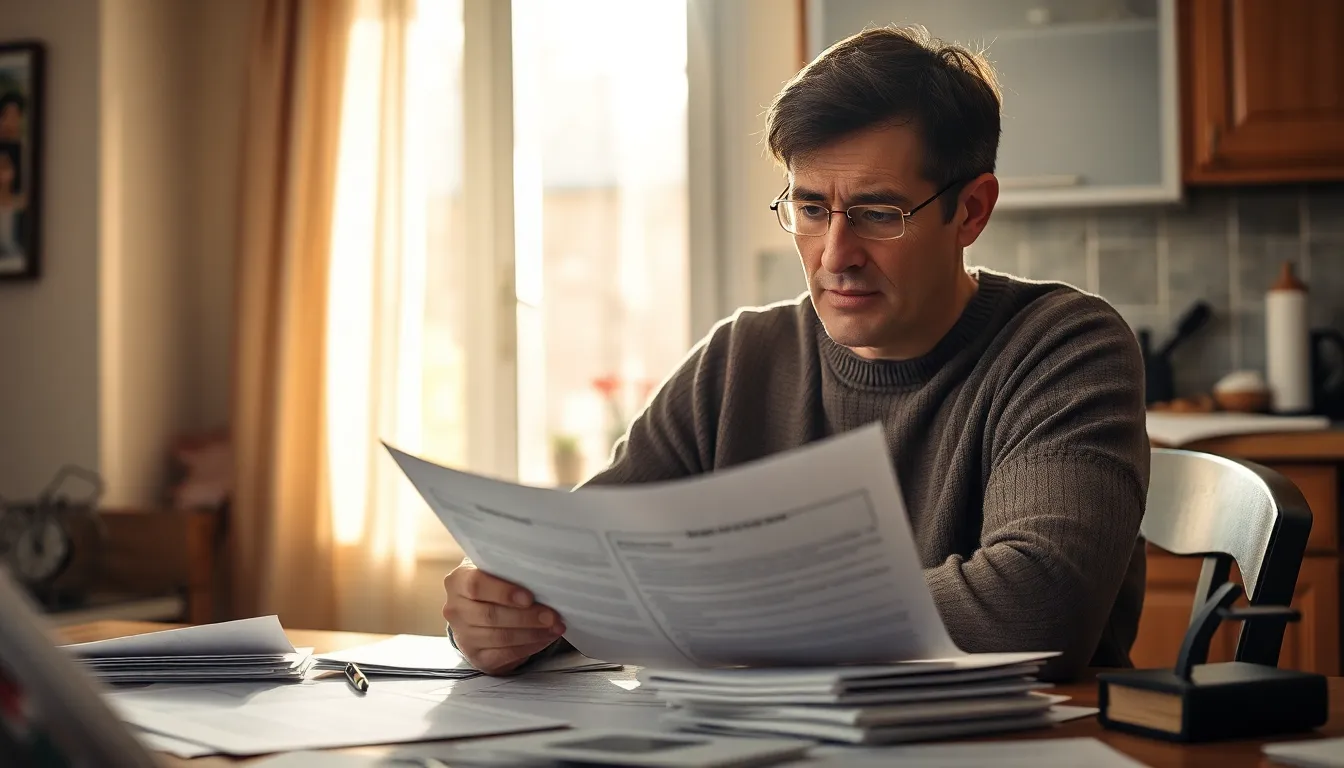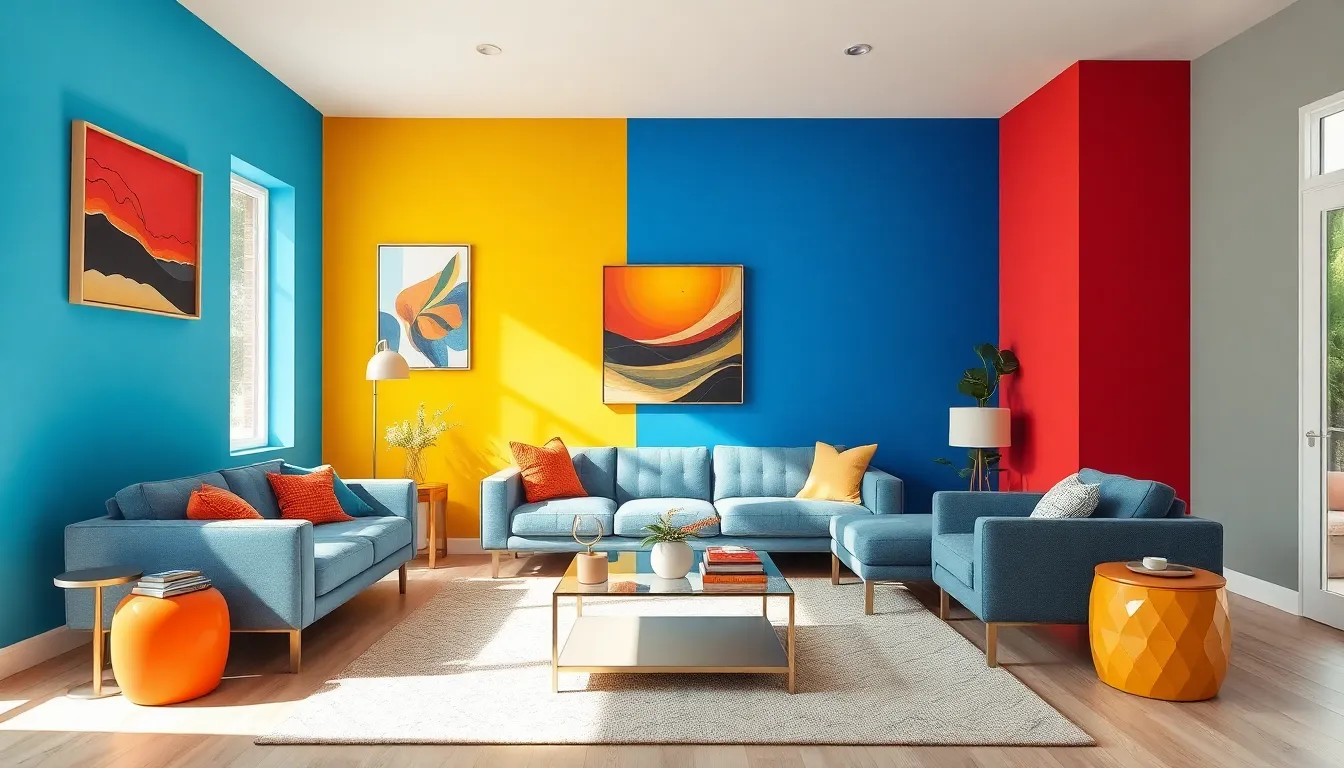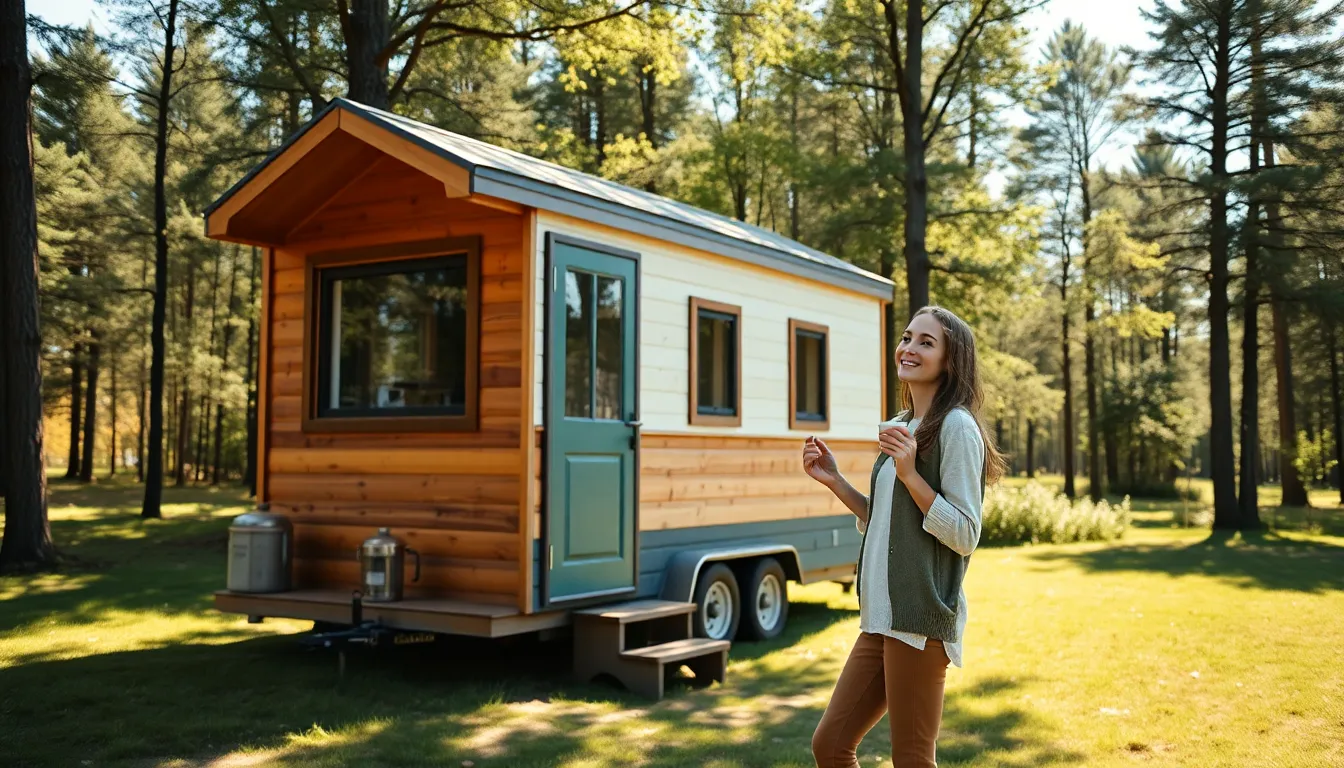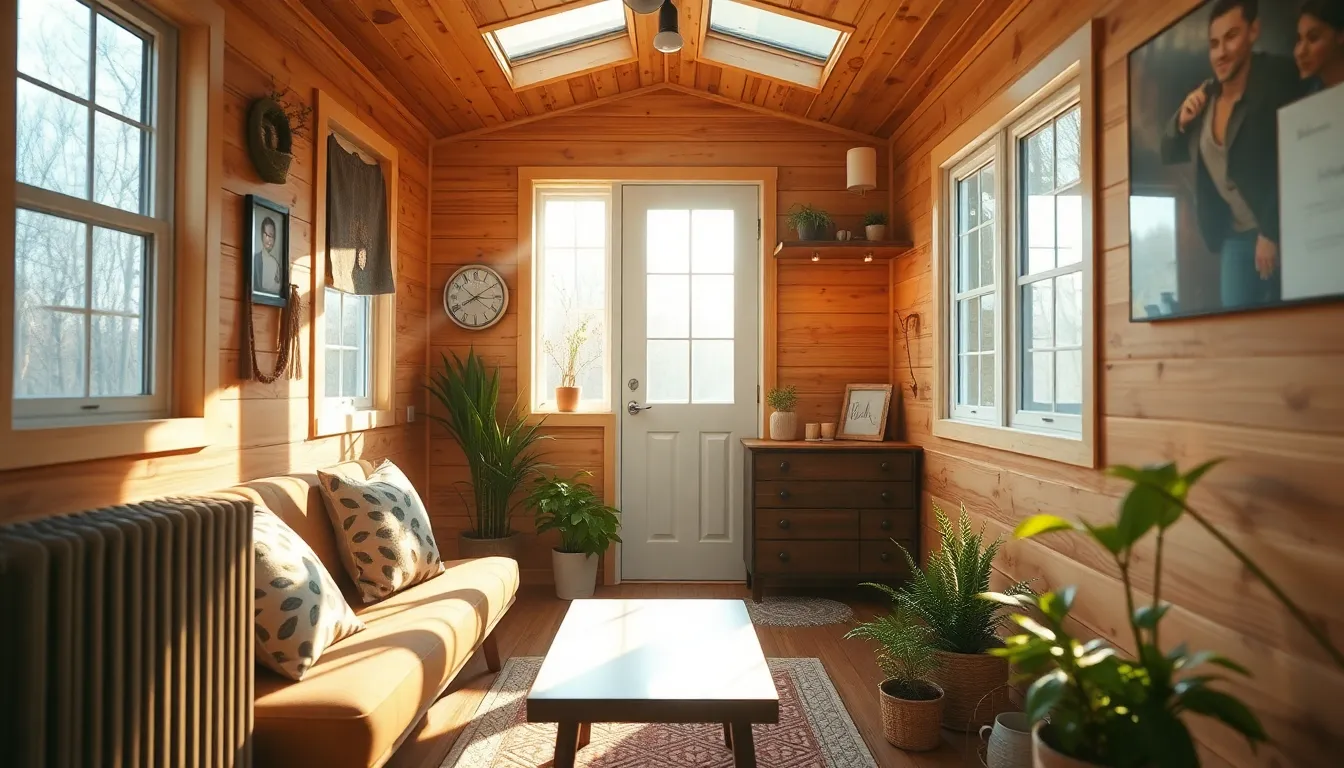Imagine stepping into a world where soft hues whisper tranquility and every corner feels like a hug from a marshmallow. Pastel interiors aren’t just a trend; they’re a lifestyle choice that transforms spaces into serene retreats. With shades like mint green, blush pink, and buttery yellow, these colors invite light and create an atmosphere that’s both calming and playful.
Table of Contents
ToggleOverview of Pastel Interiors
Pastel interiors offer a unique approach to home design, infusing spaces with soft, inviting colors. Shades like mint green, blush pink, and buttery yellow create a soothing atmosphere. These hues enable homeowners to express their personality while maintaining a sense of calm.
Design choices play a significant role in achieving this aesthetic. Furniture pieces in pastel colors can serve as focal points, complementing neutral walls or contrasting darker elements. Decorative accents such as cushions, rugs, and artworks can elevate the overall ambiance, adding layers of texture and visual interest.
Incorporating pastel elements into various rooms enhances their function and vitality. Living spaces adorned with pastel accents can feel open and airy. Bedrooms painted in soft tones promote relaxation and tranquility, essential for restful sleep. Kitchens featuring pastel cabinetry or accessories inspire a cheerful cooking environment.
Lighting proves crucial in pastel interiors. Natural light amplifies these soft shades, making rooms appear brighter. Strategically placed fixtures can accentuate the pastel palette, highlighting specific design features.
Lastly, combining pastel colors with natural materials fosters a balanced and harmonious look. Wood, linen, and ceramics pair well with pastel shades, creating an organic feel. Embracing these elements transforms interiors into serene retreats, offering both comfort and style.
Key Characteristics of Pastel Interiors
Pastel interiors showcase specific design features that create inviting and tranquil environments. The subtle and soothing nature of pastel hues enhances overall aesthetics.
Color Palette
Pastel colors include soft shades like mint green, blush pink, lavender, and buttery yellow. These shades contribute to a serene ambiance throughout different spaces. Using a mix of these colors adds depth without overwhelming a room. Complementary tones enhance visual interest while maintaining harmony. Shades can also evoke specific moods; for instance, light blues promote calmness, while soft greens inspire freshness. A balanced combination achieves a cohesive palette that feels effortless.
Textures and Materials
Textures play an essential role in pastel interiors. Soft fabrics such as linen, cotton, and velvet create warmth and comfort throughout spaces. Incorporating natural materials like wood introduces an organic element, balancing the delicate colors. Ceramics and glass add a touch of sophistication, enhancing visual appeal. Layering different textures creates depth and prevents monotony. For example, combining pastel-colored throws with textured cushions can elevate a seating area. Varied surfaces from smooth finishes to plush textiles invite touch, enriching the overall experience in pastel spaces.
Benefits of Pastel Interiors
Pastel interiors offer numerous advantages, enhancing both ambiance and mood in living spaces. Soft colors create inviting atmospheres, transforming environments into calming retreats.
Psychological Impact
Colors influence emotions significantly. Pastels promote tranquility and reduce stress levels. Mint green can evoke a sense of renewal, while blush pink often brings warmth. A serene environment encourages relaxation, especially in bedrooms and living areas. These colors can also inspire creativity, making kitchens feel cheerful and uplifting. Pastel interiors often lead to enhanced well-being, providing a gentle backdrop that supports mental clarity.
Aesthetic Appeal
Visual appeal stands out in pastel interiors. Subtle hues create a soothing experience, allowing more vibrancy without overwhelming the senses. Light shades complement various styles, from modern to vintage. Pastels harmonize well with natural elements like wood and linen, enhancing both texture and depth. Such color schemes invite light, making rooms feel spacious and airy. With the right combinations, pastel interiors offer a fresh and inviting aesthetic that appeals to a wide range of tastes.
Popular Styles Featuring Pastel Interiors
Pastel interiors integrate seamlessly into various design styles. Two prominent styles that embrace this aesthetic are Scandinavian design and Bohemian style.
Scandinavian Design
Scandinavian design emphasizes minimalism and functionality. Soft shades like mint and powder blue create a serene atmosphere. Natural light enhances these colors, making spaces feel open and airy. Furnishings often feature clean lines, with pastel furniture adding warmth to the simplicity. Textiles in pale hues, such as linen and wool, contribute to comfort while maintaining a bright look. Balanced arrangements ensure that no element overwhelms the visual experience. Overall, Scandinavian interiors exemplify how pastels can harmonize simplicity with elegance.
Bohemian Style
Bohemian style thrives on eclectic mixes and personal expression. Pastel colors complement the vibrant patterns typically found in this aesthetic. Blush pinks and soft yellows harmonize with rich textiles, enhancing visual interest without competing for attention. Layering different fabrics and incorporating various decor items can create a cozy yet dynamic environment. Plants and natural elements also play a crucial role, bringing life into the space while maintaining the pastel theme. This style invites creativity, allowing homeowners to showcase individuality through thoughtful pastel integration.
Tips for Decorating with Pastel Interiors
Pastel interiors create serene spaces that embrace soft hues. Implementing thoughtful design choices elevates the aesthetic and energizes environments.
Choosing the Right Shades
Selecting shades involves considering how colors interact within a space. Neutral tones, like soft beige or white, provide balance for pastel colors. Layering hues, such as mint green with blush pink, adds depth while maintaining a soothing atmosphere. Incorporating various pastel tones can create an inviting palette that resonates with personal preference. Experimenting with swatches in different lighting can help identify the perfect combination. Look for inspiration in nature, where pastel colors coexist harmoniously, drawing from the beauty of the environment.
Accent Pieces and Accessories
Furnishing with accent pieces enhances the overall pastel aesthetic. Choosing decorative items like vases, cushions, and rugs in complementary shades adds personality. Incorporate artwork that features pastel tones to create focal points on walls. Furniture pieces, such as chairs and tables, can accentuate the color scheme, contributing to a cohesive look. Prioritize natural materials for accessories, ensuring they harmonize with the pastel palette. Layering textures, such as soft fabrics alongside sleek ceramics, creates a visually dynamic environment. Mixing simple designs with bold pastel elements fosters an engaging and cozy atmosphere.
Conclusion
Pastel interiors offer a refreshing and inviting approach to home design. By embracing soft colors and natural materials, these spaces create serene environments that enhance well-being. The calming effect of pastel hues not only transforms rooms but also promotes relaxation and creativity.
Whether through minimalist Scandinavian designs or eclectic Bohemian styles, pastel interiors encourage personal expression while maintaining harmony. With careful selection of shades and textures, anyone can craft a tranquil retreat that feels both stylish and comforting. Ultimately, pastel interiors are more than just a trend; they represent a lifestyle that celebrates beauty and serenity in everyday living.

